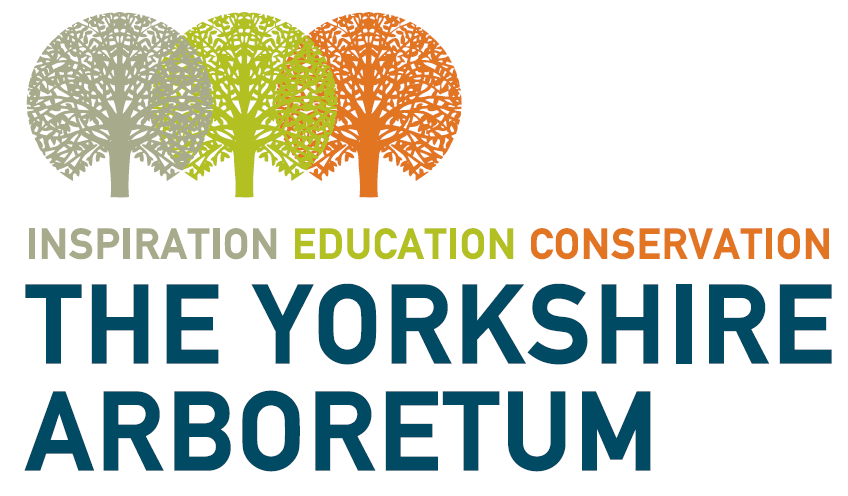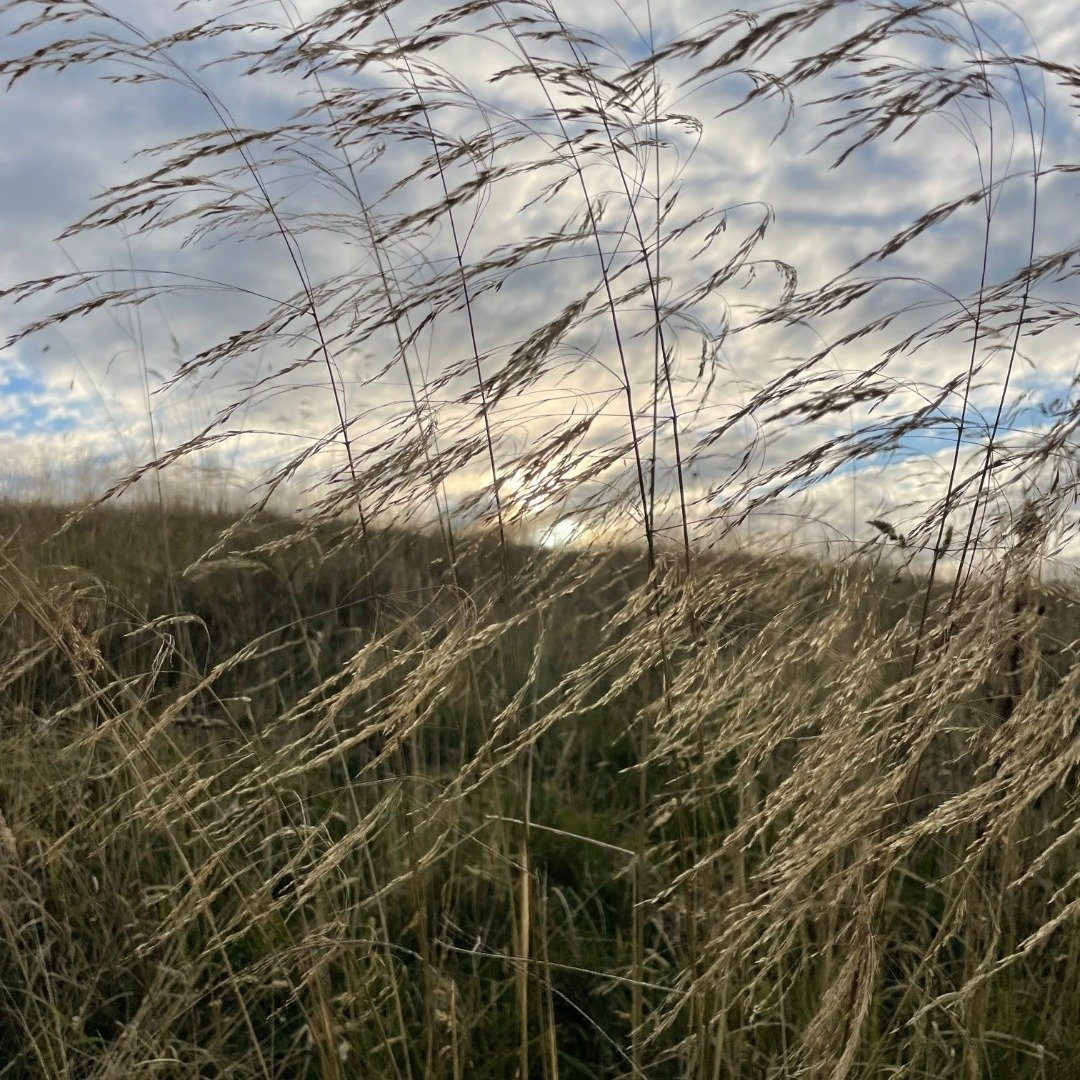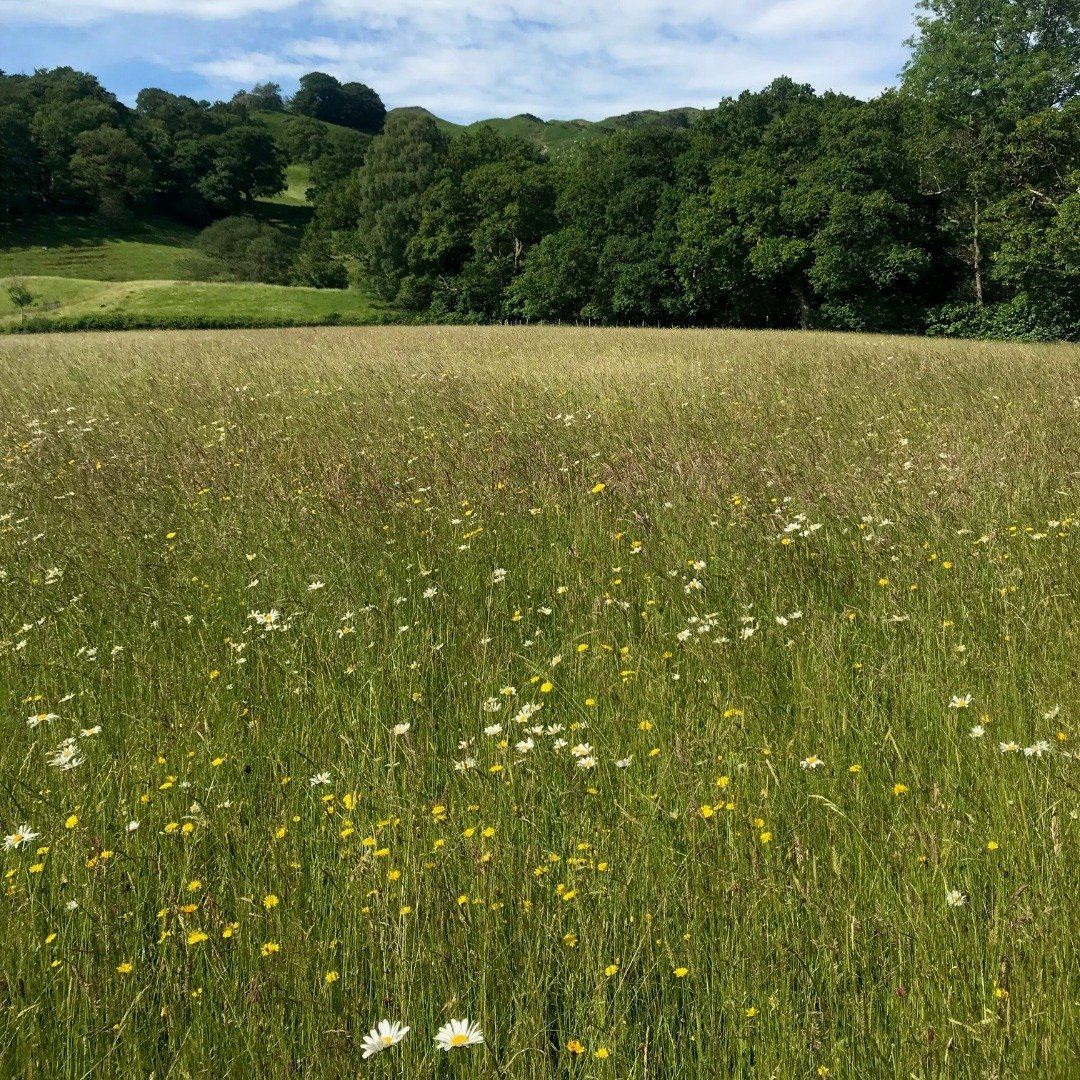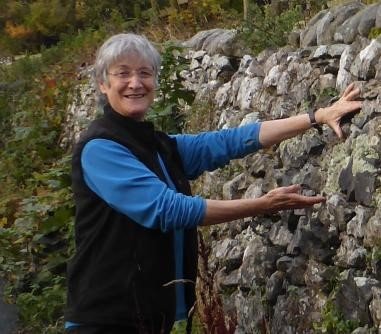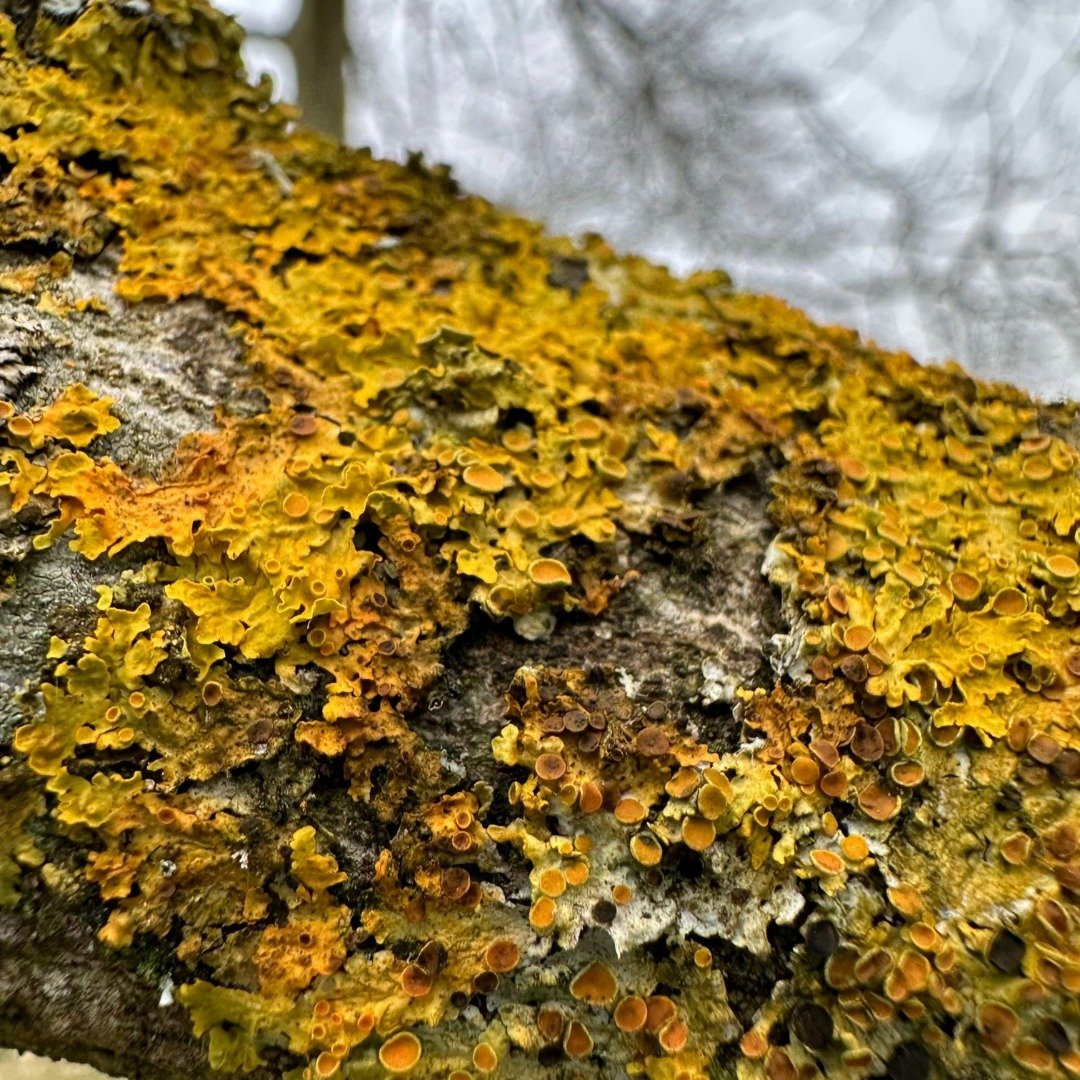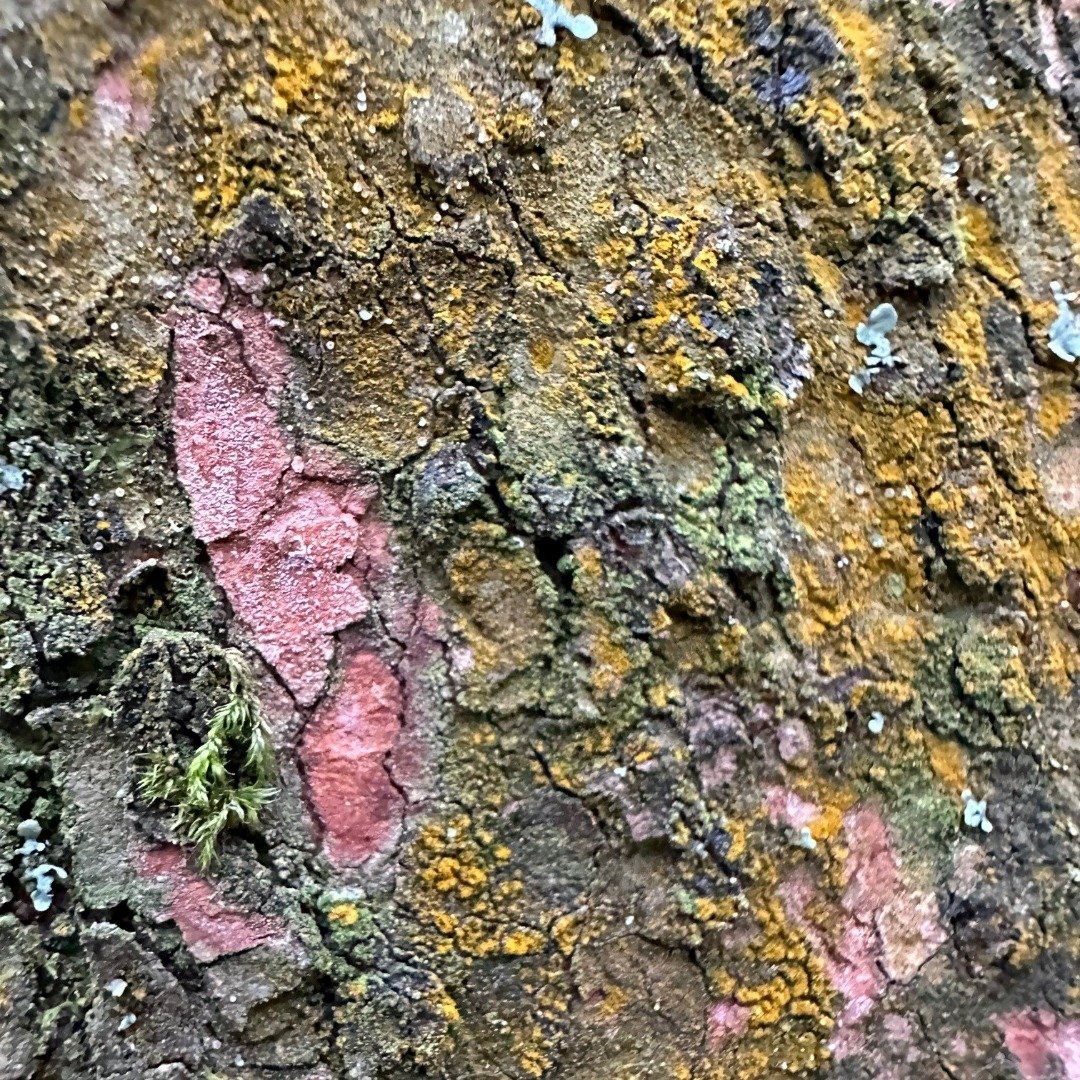



Tree Surveying for Pests and Diseases
Full day course including buffet lunch.
About
To look after trees well you need to know when there is something wrong with them so you can take appropriate action. However, as there are only so many symptoms a tree can express, it’s not always easy to figure out what might be wrong. On this course you will learn how to methodically work through all the possibilities, to accurately record a tree’s symptoms and surrounds and categorise what type of problem you are most likely observing. You will also learn when to take samples, where to send them for testing and what to do if you find something problematic.
Aims
Following the course, learners will be able to survey trees for the presence of pests and/or diseases.
Categorise the type of problem they are most likely observing.
Create a record of the assessment and determine next steps.
Take a sample for laboratory analysis.
Report pests and diseases with Tree Alert
Objectives
Portray the environmental, economic and social impact of tree pests.
Discuss the difference between physiological and pathological issues.
Work through the observation of non-infectious and infectious tree disease methodically using case studies in the arboretum collection.
Observe how to take an appropriate sample for laboratory analysis.
Talk through the use of tree alert to accurately report pests and diseases.
Determine next steps and where to go for more information.
Outcomes
By the end of the workshop, you will be able to:
Provide examples of how pests might impact upon economic, social, environmental and health and safety aspects in and around your workplace.
Differentiate between physiological and pathological problems.
Categorize types of tree disease.
Systematically observe a tree’s surroundings and symptoms to complete a survey form and/or compile a Tree Alert report.
Take samples for analysis.
Research which tree pests are important to your work using the UK Plant Health Risk Register and Pest Risk Analysis.
Take appropriate action where necessary.
Audience
People working in countryside management, gardening, plant nursery trade, nature conservation, landscape design, utility contracts, forestry, management of public and private woodland resource, conservation and tree health volunteers, interested amateurs, career developers.

Biosecurity Basics - half day
Half Day Course
About
Tree pests and diseases have never been so great a problem as they are now, but the issues are often poorly understood. With a broad range of problems affecting trees, it can be difficult to know where to begin as an amateur or entry-level professional. This course will summarise tree health and biosecurity issues, give you the opportunity to see pests and diseases on trees in the arboretum and get you off to the right start with an introduction to good biosecurity practice.
Aims
Biosecurity basics is a half day course for people who want to know more about pathways of introduction and spread of pests and diseases in plants and trees, along with biosecurity measures to reduce risk. Teaching in the classroom and a short tour will be used to familiarise learners with some high-profile tree pests and basic categories of problems that affect tree health.
Objectives
Portray the environmental, economic and social impact of tree pests at a national level using introductory examples of priority tree pests.
Provide a brief overview of the UK Plant Health Service.
Combine introductory lecture and a short tree health tour of the arboretum to raise awareness of frequently found and priority pests and disease.
Talk learners through the minimum information to collect to report tree disease.
Highlight the importance of reporting concerns accurately, and where to report them.
Introduce simple biosecurity measures that may limit the spread of tree diseases.
Outcomes
By the end of the workshop, you will be able to:
Justify why it is important to limit the spread of tree pests.
Outline who is responsible for the management of tree pests in the UK.
Begin to categorise and recognise basic types of tree problems.
Give named examples of public priority tree pests and describe the common symptoms that are useful to identify them.
Use recommended resources to continue developing knowledge about tree pests.
Limit the spread of harmful organisms by practicing basic biosecurity.
Audience
People working in landscape or countryside management, gardening, plant nursery trade, nature conservation volunteers, landscape design, utility contracts, forestry, management of public and private woodland resource, or as lead conservation volunteers and tree health volunteers.

Tree Surveying for Pests and Diseases
Full day course including buffet lunch.
About
To look after trees well you need to know when there is something wrong with them so you can take appropriate action. However, as there are only so many symptoms a tree can express, it’s not always easy to figure out what might be wrong. On this course you will learn how to methodically work through all the possibilities, to accurately record a tree’s symptoms and surrounds and categorise what type of problem you are most likely observing. You will also learn when to take samples, where to send them for testing and what to do if you find something problematic.
Aims
Following the course, learners will be able to survey trees for the presence of pests and/or diseases.
Categorise the type of problem they are most likely observing.
Create a record of the assessment and determine next steps.
Take a sample for laboratory analysis.
Report pests and diseases with Tree Alert
Objectives
Portray the environmental, economic and social impact of tree pests.
Discuss the difference between physiological and pathological issues.
Work through the observation of non-infectious and infectious tree disease methodically using case studies in the arboretum collection.
Observe how to take an appropriate sample for laboratory analysis.
Talk through the use of tree alert to accurately report pests and diseases.
Determine next steps and where to go for more information.
Outcomes
By the end of the workshop, you will be able to:
Provide examples of how pests might impact upon economic, social, environmental and health and safety aspects in and around your workplace.
Differentiate between physiological and pathological problems.
Categorise types of tree disease.
Systematically observe a tree’s surroundings and symptoms to complete a survey form and/or compile a Tree Alert report.
Take samples for analysis.
Research which tree pests are important to your work using the UK Plant Health Risk Register and Pest Risk Analysis.
Take appropriate action where necessary.
Audience
People working in countryside management, gardening, plant nursery trade, nature conservation, landscape design, utility contracts, forestry, management of public and private woodland resource, conservation and tree health volunteers, interested amateurs, career developers.

Biosecurity Basics - half day
Half Day Course
About
Tree pests and diseases have never been so great a problem as they are now, but the issues are often poorly understood. With a broad range of problems affecting trees, it can be difficult to know where to begin as an amateur or entry-level professional. This course will summarise tree health and biosecurity issues, give you the opportunity to see pests and diseases on trees in the arboretum and get you off to the right start with an introduction to good biosecurity practice.
Aims
Biosecurity basics is a half day course for people who want to know more about pathways of introduction and spread of pests and diseases in plants and trees, along with biosecurity measures to reduce risk. Teaching in the classroom and a short tour will be used to familiarise learners with some high-profile tree pests and basic categories of problems that affect tree health.
Objectives
Portray the environmental, economic and social impact of tree pests at a national level using introductory examples of priority tree pests.
Provide a brief overview of the UK Plant Health Service.
Combine introductory lecture and a short tree health tour of the arboretum to raise awareness of frequently found and priority pests and disease.
Talk learners through the minimum information to collect to report tree disease.
Highlight the importance of reporting concerns accurately, and where to report them.
Introduce simple biosecurity measures that may limit the spread of tree diseases.
Outcomes
By the end of the workshop, you will be able to:
Justify why it is important to limit the spread of tree pests.
Outline who is responsible for the management of tree pests in the UK.
Begin to categorise and recognise basic types of tree problems.
Give named examples of public priority tree pests and describe the common symptoms that are useful to identify them.
Use recommended resources to continue developing knowledge about tree pests.
Limit the spread of harmful organisms by practicing basic biosecurity.
Audience
People working in landscape or countryside management, gardening, plant nursery trade, nature conservation volunteers, landscape design, utility contracts, forestry, management of public and private woodland resource, or as lead conservation volunteers and tree health volunteers.

Grow Your Own Trees: Collecting & Sowing Tree Seed
Yorkshire Arboretum Director John Grimshaw will show you how to select, harvest, clean and sow seeds collected from trees in the arboretum.

Basic Introduction to Grass Identification
It is useful to be able to identify grasses - for botanical surveys, for monitoring grassland, for understanding agriculture and ecosystems, and for enjoying their beauty. Grass identification can be challenging: coming on a beginners day course is an excellent way to start.
This lively, one day course with Dr Judith Allinson is suitable for anyone who would like to start learning how to identify grasses, whether a student, an amateur naturalist, a farmer, a scientist, a botanical or agricultural surveyor, a gardener. Participants will see lots of examples of the grasses growing in slightly different habitats.
Location: Yorkshire Arboretum Tree Health Centre
Tutors: Dr Judith Allinson Fee: £130
Level: No prior knowledge required
Includes buffet lunch
Please book your place below:
About the Course
Aim
For participants to recognise common species of neutral grassland and a few in woodland, concentrating on those that come into flower early. Participants will learn the vocabulary to describe both vegetative and flowering features of grasses, and thus be able to start using grass keys.
Objectives
To learn to recognise c. 10 common species of grasses that you can probably find at home too.
To see a variety of other grasses and have distinctive features pointed out.
To be introduced to and learn and use the vocabulary needed to describe vegetative features, and grass flowers.
To be introduced to some of the books helpful for identifying grasses.
The above will be achieved by means of teaching in the classroom, followed by a walk to look for grasses in the grounds of the Yorkshire Arboretum. If there is time we will use a grass key. We will concentrate on grasses in neutral grassland.
Outcomes
By the end of the course, participants will:
Have a small collection of grasses to take home, including vegetative and flowering specimens. These can be in the form of pressed plants, or grasses stuck onto a sheet with sticky back plastic (or both).
Have gained confidence in recognising these plants.
Have been introduced to and learnt the vocabulary needed to describe special features of grasses.
Have been introduced to some of the books helpful for identifying grasses.
Useful Accessories / Notes
Hand lenses will be available for participants to borrow who do not have a hand lens of their own. If they have them, participants are invited to bring hand lenses and fine tweezers.
Waterproof clothing and strong footwear are recommended. It is not anticipated that we will be walking very far.
Notebook, pen, plastic bags can be useful.
Note this is an introductory course. It is hoped to run further courses involving more practice in use of keys, finding more species, and looking at vegetative features.
About the Tutor
Judith (or Dr Judith Allinson) started work as a field biology/botany tutor at Malham Tarn Field Centre. Since then she has worked carrying out botanical surveys for Natural England (and its predecessors) and other organisations, and spent some time school teaching. She has run “Grasses” and “Grasses and Sedges” courses at many Field Studies Council Centres and elsewhere, specialising in identifying grasses using vegetative features. She co-authored the AIDGAP guide: “British grasses: a punched card key to grasses in the vegetative state.” by Pankhurst and Allinson. She is a past president of the Yorkshire Naturalists’ Union.
Contact
For further information about the course please contact the team by email administration@treehealthcentre.org or phone 01653 648598

Discovering Lichens
Lichens are a much unrecorded section of our wildlife. Yet they cover 6-8 percent of the world’s land surface. Recently more people have become aware of the symbiotic relationship of the fungus and alga (or blue-green bacterium) which make up the lichen.
This one day course with Dr Judith Allinson will take you on a journey of discovery into the world of lichen identification. You will learn how to recognise several common species and gain the vocabulary to describe a new lichen you find to a lichenologist. Suitable for beginners, students, amateur naturalists, and botanical surveyors.
Location: Yorkshire Arboretum Tree Health Centre
Tutors: Dr Judith Allinson Fee: £130
Level: No prior knowledge required
Includes buffet lunch
Please book your place below:
About the Course
Why
Lichens are a much unrecorded section of our wildlife. Yet they cover 6-8 percent of the world’s land surface. Recently more people have become aware of the symbiotic relationship of the fungus and alga (or blue-green bacterium) which make up the lichen. Look at a lichen under a hand lens and see the rich variety of colours and textures and you will soon become hooked! It is easier to come on a course with a tutor and have the species on a branch pointed out to you than to learn them from a book.
Aim
Participants will learn how to recognise several common species of lichen, gain the vocabulary to describe a new lichen you find to a lichenologist, or read about a lichen in a book. And, to learn how some species of lichen can tell us about pollution levels.
Objectives
To learn about common species of lichens growing on trees in the Yorkshire Arboretum, that you can probably find at home too.
To see a variety of other lichens.
To be introduced to and learn and use the vocabulary needed to describe lichens.
To be introduced to some of the books and website pages helpful for identifying lichens.
The above will be achieved by means of teaching in the classroom, followed by a walk to look for lichens on trees in the Yorkshire Arboretum.
Outcomes
By the end of the course, participants will:
Have a small collection of lichens to take home, many of these are likely to be growing on trees near them in other parts of Yorkshire.
Seen a variety of other lichens and will have been introduced to and learnt some of the vocabulary needed to describe lichens.
Be able to say whether a lichen is a crustose, fruticose, or foliose lichen.
Have seen two simple chemical tests often used to distinguish lichens.
Have been introduced to some of the books and website pages helpful for identifying lichens.
Useful Accessories
Hand lenses will be available for participants to borrow who do not have a hand lens of their own.
If they have them, participants are invited to bring hand lenses, fine tweezers, a mobile phone, or camera with close up facilities. But do not buy one specially for the course!
The most useful book is Frank Dobson’s “Lichens - An Illustrated Guide to the British and Irish Species” (£35 from the British Lichen society - £5 reduction if you are a member) but as participants are beginners it is not expected that many people will have one.
Waterproof clothing and strong footwear are recommended. It is not anticipated that we will be walking very far.
Notebook, pen, plastic bags, sheets of A4 paper or envelopes, and a penknife can also be useful.
About the Tutor
Judith (or Dr Judith Allinson) started work as a botany tutor at Malham Tarn Field Centre. Since then she has worked carrying out botanical surveys for Natural England (and its predecessors) and other organisations, school teaching and teaching Grasses and Sedges courses at Field Studies Council Centres. Over the last ten years her interest in lichens has increased. She currently hosts the Zoom Lichen Chat and Improvement Group for the British Lichen Society, and has served on Council of the British Lichens Society. She is a past president of the Yorkshire Naturalists’ Union and is keen to encourage young people to find out about lichens.
Contact
For further information about the course please contact the team by email administration@treehealthcentre.org or phone 01653 648598

Tree Surveying for Pests and Diseases
To look after trees well you need to know when there is something wrong with them so you can take appropriate action. However, as there are only so many symptoms a tree can express, it’s not always that easy to figure out what might be wrong.
On this course you will learn how to methodically work through all the possibilities to accurately record a tree’s symptoms and surrounds and categorise what type of problem you are most likely observing. You will also learn when to take samples, where to send them for testing and what to do if you find something problematic.
Course fee £95. Includes a buffet lunch and refreshments
Please book below
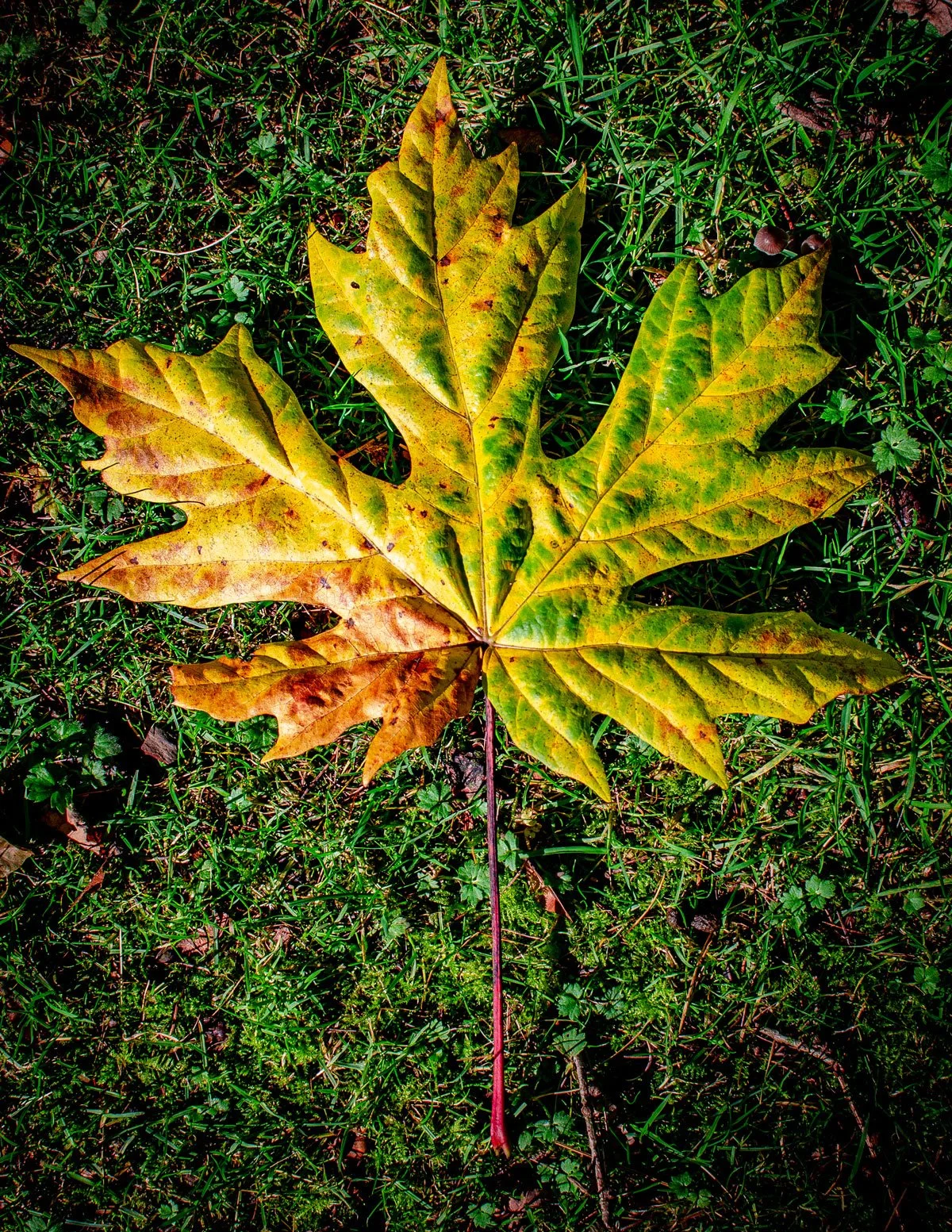
Introduction to Tree Identification: Broadleaf Trees
This workshop will introduce you to the process of tree identification, based on summer foliage, using a selection of common or native deciduous trees as our starting point. Following a short introduction in the classroom, we will go outside to study them as growing trees in full leaf and fruit, concluding with an identification challenge in an area of native trees.
This workshop is led by Arboretum Director John Grimshaw.
Location: Yorkshire Arboretum Tree Health Centre
Level: No prior knowledge required
Includes buffet lunch
Course fee: £110 - Please book below

NEW Course - Making Wildflower Meadows
Traditional wildflower meadows are among the richest habitats for all kinds of native biodiversity, but continue to disappear from the landscape.
This day course, led by John Grimshaw, will encourage you to try and create your own wildflower meadow. Even converting a few square metres of lawn can make a big difference.
Location: Yorkshire Arboretum Peter Sowerby Building
Fee: £110 with lunch provided

Wild Your Hedge
photo: @anniespratt
Healthy hedgerows are essential habitats for UK biodiversity, supporting over 2,000 species including the hedgehog and several European Protected Species, notably the dormouse, most species of bat, the great-crested newt and many more. However, most garden hedges a made up of just one species, for ornamental reasons, and biodiversity is overlooked.
To celebrate National Hedgerow Week, we would like to encourage you to challenge that norm and introduce a diverse range of species, habitats and food sources to your garden hedge to increase biodiversity and build climate resilience. Rewild your hedge will teach you all the reasons urban and garden hedges are so important and what makes hedges the UKs largest priority habitat. You will leave the course with a fresh appreciation for the value of your small garden habitat, armed with the information you need to improve its value further.
Course fee £95 includes lunch and refreshments. Please book below
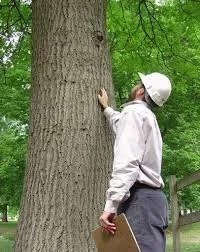
LANTRA Professional Tree Inspection Course
A three-day Lantra professional tree inspection course with Matthew Cooper from Morton Training aimed at competent arboriculturists.
Location: Yorkshire Arboretum Tree Health Centre
Tutors: Matthew Cooper Fee: £750 + VAT
Level: Advanced
Lunch and Refreshments Provided
Course Details:
Our Lantra three-day course aims to provide specific tree inspection training at an advanced level for competent arboriculturists. This will enable you to identify defects from ground level, from a climbed inspection or inspection aided by the use of a Mobile Elevated Working Platform (MEWP)*.
This professional tree training course will train you in how to specify the necessary remedial works and record the inspection process; this would then form a part of a defensible system.
At the end of the course you will undertake an assessment directly related to tree inspection. The course is not aimed at covering report writing; however, presentation of findings will be examined and advice given.
*Tree climbing and use of MEWP will not be required during the course
Audience:
You must be an experienced and qualified arboriculturist with an in-depth knowledge of plant and arboricultural science. This will need to include a thorough knowledge of wood decaying fungi, identification and interpretation of signs and symptoms of ill health and structural failure across a wide range of tree species and circumstances. You will also need to be thoroughly experienced in carrying out tree inspections and surveys.
You will be professionally involved in arboriculture – specifically tree inspection.
Course Aim:
By the end of the course, you'll be able to:
· Recognise the role of the tree inspector in risk management
· Identify the legal framework in the context of statute and common law that affects tree inspection and the duties and liabilities of the owner, manager, and inspector
· Summarise how a tree system functions, what constitutes a safe tree and know that energy is required to keep the tree in a healthy/safe state
· Adopt a systematic and consistent methodology for carrying out visual tree inspection at an advanced level with the aid of binoculars, mallet, and probe
· Collect data out in the field in accordance with the inspection instructions (having determined the scope and limitations) using a suitable format. For this course, a written survey template with appropriate headings will be used
· Recognise a range of observable mechanical and biological defects as seen in trees and confirm by the use of textbooks where necessary Identify a range of commonly seen pests, diseases, and disorders that affect tree safety, confirm their identity by the use of textbooks, where necessary, and state the arboricultural significance of finding them in the field
· State the appropriate control/remedial measures required to eliminate or reduce risks identified in the inspection process to an acceptable level
· Determine when an aerial inspection is required, also if proactive management recommendations can be made which may eliminate future defects from forming
· Prioritise the necessary tree/management works with time scales based on a broad category of risk assessment
· Identify when it is appropriate to recommend the use of decay detecting or measuring equipment, based on a basic knowledge of the working principles of commonly available equipment
· Understand that a balance between the remedial measure opted for and the range of benefits/values that a tree may have requires special attention, for example, amenity, wildlife, historical, veteran, rarity, and public access.
For those attending the course a full reading list will be provided once a place has been booked in the course
About the Tutor:
Matthew has a Bachelor of Science in arboriculture with first class honours. He is a Fellow of the Arboricultural Association, a Chartered Environmentalist and a Chartered Arboriculturalist. Matthew is a Lantra Awards Registered Instructor and City and Guilds (NPTC) Approved Assessor.
Matthew is the Director of Trees Limited and a Chartered Arboriculturalist of Tree Research, Education and Environmental Service Ltd. He has over 25 years’ experience in the arboricultural industry.
His previous posts include Senior Arboricultural Consultant for SAC Consulting, part of SRUC, Arboricultural Adviser for SAC. Team Leader for Bartlett Tree Experts and arborist and utility arborist for various companies in the UK, Norway and New Zealand.
How to Book:
Please contact Morton Training on 01430 860057 or email info@mortontraining.co.uk

Introduction to Tree Identification: Native Trees
Are you interested in our native trees but feel you don’t know much about them, or how to tell them apart? In this day course John Grimshaw will introduce you to them using the collection at the Yorkshire Arboretum, teaching you about the various features to look for and some simple ways to remember them. The focus will be on species most often seen in northern England, using summer foliage characters to tell them apart.
Location: Yorkshire Arboretum Tree Health Centre
Tutors: Dr John Grimshaw Fee: £110
Level: No prior knowledge required
Includes buffet lunch
Please book your place below:
Why
Tree identification often seems difficult and challenging, and can be an obstacle to fully appreciating these wonderful plants that are so important to our lives. Being able to identify them opens many doors to understanding the natural world and the wealth of cultural and biological stories each species can tell. Advocacy for trees begins with naming!
Content
Discuss the principles of identification, and the need for names
Learn about the diversity of British native and frequently planted or naturalised broad-leaved trees
Learn some simple characters to look for, and examine a range of specimens in the classroom to become familiar with important features
Observe growing trees in the arboretum to see how details relate to the whole individual
Undertake an identification challenge in a patch of native trees
Outcomes
By the end of the workshop, you will be able to:
Confidently recognise a range of our common native trees
Find your way around a guidebook to trees
Understand and apply principles of identification to woodland trees
Share why it’s useful to be able to distinguish between trees
Interpret your local treescape and connect to individual trees
Useful accessories: Collins Tree Guide (Owen Johnson, 2006), 10× hand lens
Contact
For further information about the course please contact the team by email administration@treehealthcentre.org or phone 01653 648598
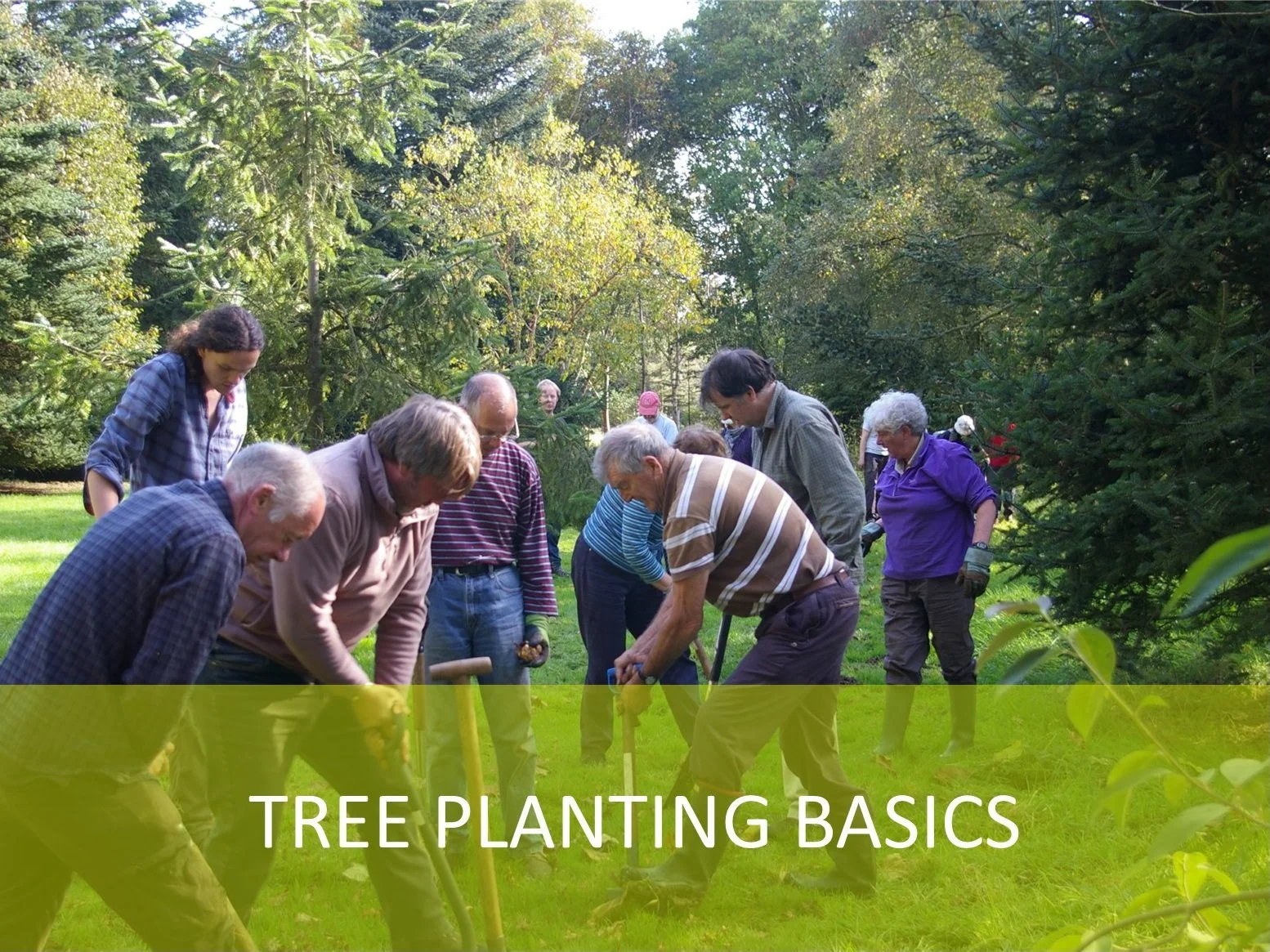
Trees for Your Garden: Planting for the Best Start
There’s a lot of interest in planting trees at present, for carbon capture and other ecosystem benefits, as well as their own beauty. Planting a tree in your garden or neighbourhood can help a lot, but choosing the right tree, planting and looking after it can be a daunting prospect. This investment can be costly both in time, money, and enthusiasm when it goes wrong.
Location: Yorkshire Arboretum Tree Health Centre
Tutors: Dr John Grimshaw Fee: £60
Level: No prior knowledge required
Please reserve your place here:
About the Course
Aim
To ensure that trees thrive, this half day course ‘Trees for Your Garden: Planting for the Best Start’ led by our Director, John Grimshaw, guides learners through choosing and planting a healthy tree and its important early maintenance. Learners will leave confident in the knowledge of how to establish a tree for future generations and know about pitfalls that should be avoided.
Objectives
Talk through the importance of sourcing healthy plants.
Share a succinct list of important criteria to choose a high quality retailer.
Use live examples and images to highlight what to look for when purchasing healthy trees.
Explain the best time to plant and show how to handle and care for trees until that time comes.
Demonstrate preparation and planting whilst discussing different situations and supplements.
Use a short tour to show different methods of planting support and protection.
Prioritise the aftercare and maintenance that learners should invest their time in.
Outcomes
By the end of the workshop, you will be able to:
Confidently select good quality healthy trees in a garden centre.
Understand the need for plant passporting and traceability that this provides.
Consider and minimise the factors that might limit your tree’s establishment.
Maximise the likelihood of your tree thriving through appropriate and effective preparation, planting, support and maintenance.
Contact
For further information about the course please contact the Tree Health Centre team by email administration@treehealthcentre.org or phone 01653 648598
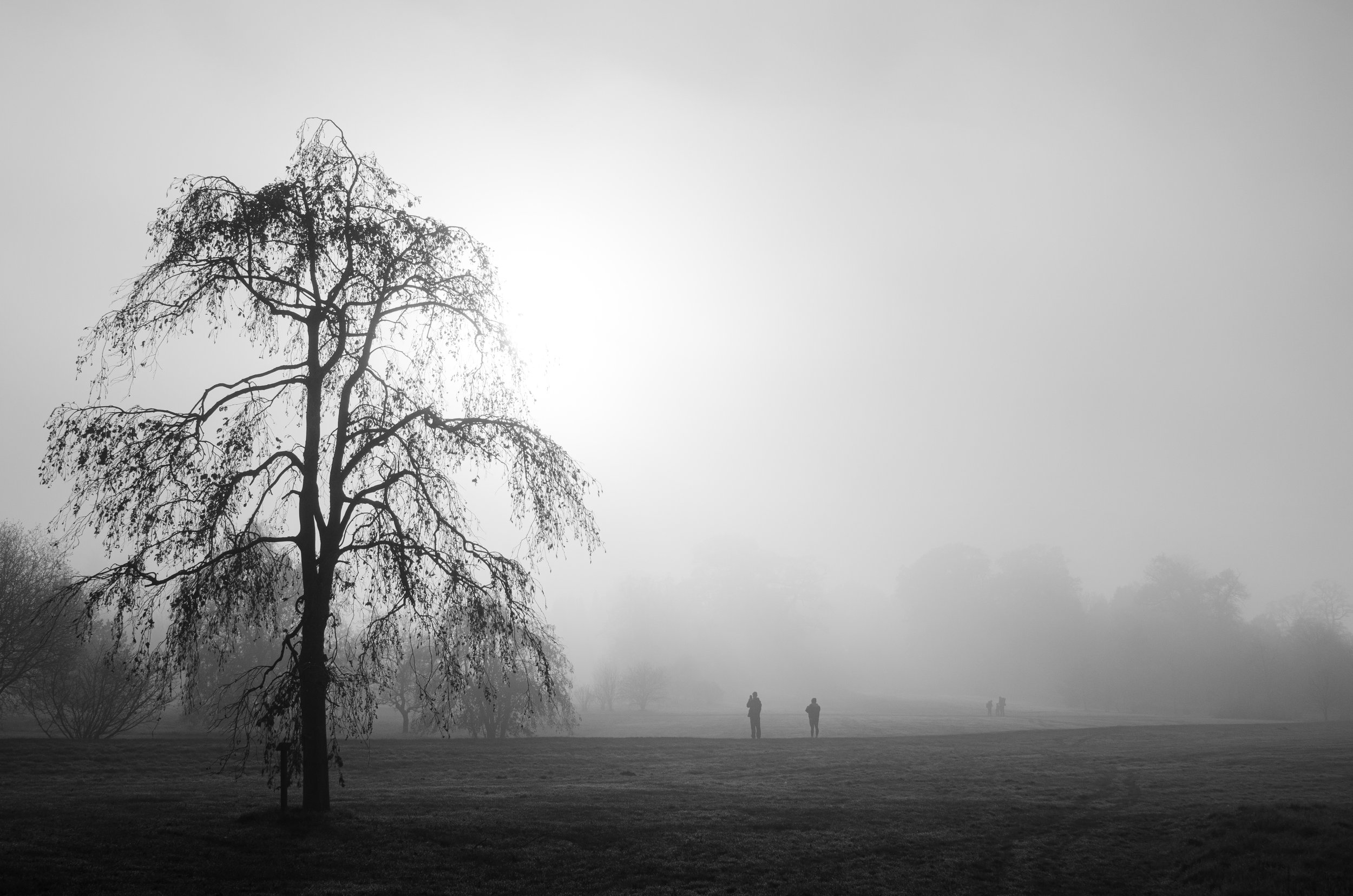
Introduction to Tree Identification: Trees in Winter
Trees are often just a beautiful in winter as in summer, as their structure and shape are revealed. It adds a great deal to your appreciation of the winter landscape to know what trees you’re looking at, and there are practical advantages too – but it can be difficult without the leaves. Luckily there are plenty of clues, you just need to know what to look for.
This day course is led by Arboretum Director John Grimshaw. It will introduce you to tree identification in winter, using on a combination of tree form, bark, and twig and bud characters, focusing on common and native deciduous trees growing in the Yorkshire Arboretum. Following a short introduction in the classroom, we will go outside to study them as growing trees before concluding with a comparative exercise inside.
Course Content
Discuss the difficulties and opportunities for identifying trees in winter
Learn some obvious characters to look for, using all parts of the tree
Examine a range of specimens in the classroom to become familiar with details to look for
Study trees in the arboretum to see how characters work together to enable identification
Make a key to separate a selection of twigs on their buds and other features
Outcomes
By the end of the workshop, you will be able to:
Recognise a selection of native trees from their winter characteristics, enabling you to appreciate the landscape more
Understand what you should look for in an unknown tree to make a winter identification
Prepare a key to plant features
Know about useful resources to learn more
Useful accessories: Collins Tree Guide (Owen Johnson, 2006), The Field Key to Winter Twigs (John Poland, 2020), Identification of Trees and Shrubs in Winter using Buds and Twigs (Bernd Schulz, 2018), 10× hand lens
Booking Information
Location: Yorkshire Arboretum Tree Health Centre
Tutors: Dr John Grimshaw Fee: £90
Level: No prior knowledge required
Includes buffet lunch

Introduction to Tree Identification: Native Trees
Why
Tree identification often seems difficult and challenging, and can be an obstacle to fully appreciating these wonderful plants that are so important to our lives. Being able to identify them opens many doors to understanding the natural world and the wealth of cultural and biological stories each species can tell. Advocacy for trees begins with naming!
Aim
Are you interested in our native trees but feel you don’t know much about them, or how to tell them apart? In this day course John Grimshaw will introduce you to them using the collection at the Yorkshire Arboretum, teaching you about the various features to look for and some simple ways to remember them. The focus will be on species most often seen in northern England, using summer foliage characters to tell them apart.
Content
Discuss the principles of identification, and the need for names
Learn about the diversity of British native and frequently planted or naturalised broad-leaved trees
Learn some simple characters to look for, and examine a range of specimens in the classroom to become familiar with important features
Observe growing trees in the arboretum to see how details relate to the whole individual
Undertake an identification challenge in a patch of native trees
Outcomes
By the end of the workshop, you will be able to:
Confidently recognise a range of our common native trees
Find your way around a guidebook to trees
Understand and apply principles of identification to woodland trees
Share why it’s useful to be able to distinguish between trees
Interpret your local treescape and connect to individual trees
Useful accessories: Collins Tree Guide (Owen Johnson, 2006), 10× hand lens

Garden Trees: Best Start
Audience
Amateur gardeners, early career private gardeners and horticulturists, and conservation volunteers.
Why
There’s a lot of interest in planting trees at present, for carbon capture and other ecosystem benefits, as well as their own beauty. Planting a tree in your garden or neighbourhood can help a lot, but choosing the right tree, planting and looking after it can be a daunting prospect. This investment can be costly both in time, money and enthusiasm when it goes wrong.
Aim
To ensure that trees thrive Garden Trees: Best Start will guide learners through choosing and planting a healthy tree and its important early maintenance. Learners will leave confident in the knowledge of how to establish a tree for future generations and know about pitfalls that should be avoided.
Objectives
Talk through the importance of sourcing healthy plants.
Share a succinct list of important criteria to choose a high quality retailer.
Use live examples and images to highlight what to look for when purchasing healthy trees.
Explain the best time to plant and show how to handle and care for trees until that time comes.
Demonstrate preparation and planting whilst discussing different situations and supplements.
Use a short tour to show different methods of planting support and protection.
Prioritise the aftercare and maintenance that learners should invest their time in.
Outcomes
By the end of the workshop, you will be able to:
Confidently select good quality healthy trees in a garden centre.
Understand the need for plant passporting and traceability that this provides.
Consider and minimise the factors that might limit your tree’s establishment.
Maximise the likelihood of your tree thriving through appropriate and effective preparation, planting, support and maintenance.
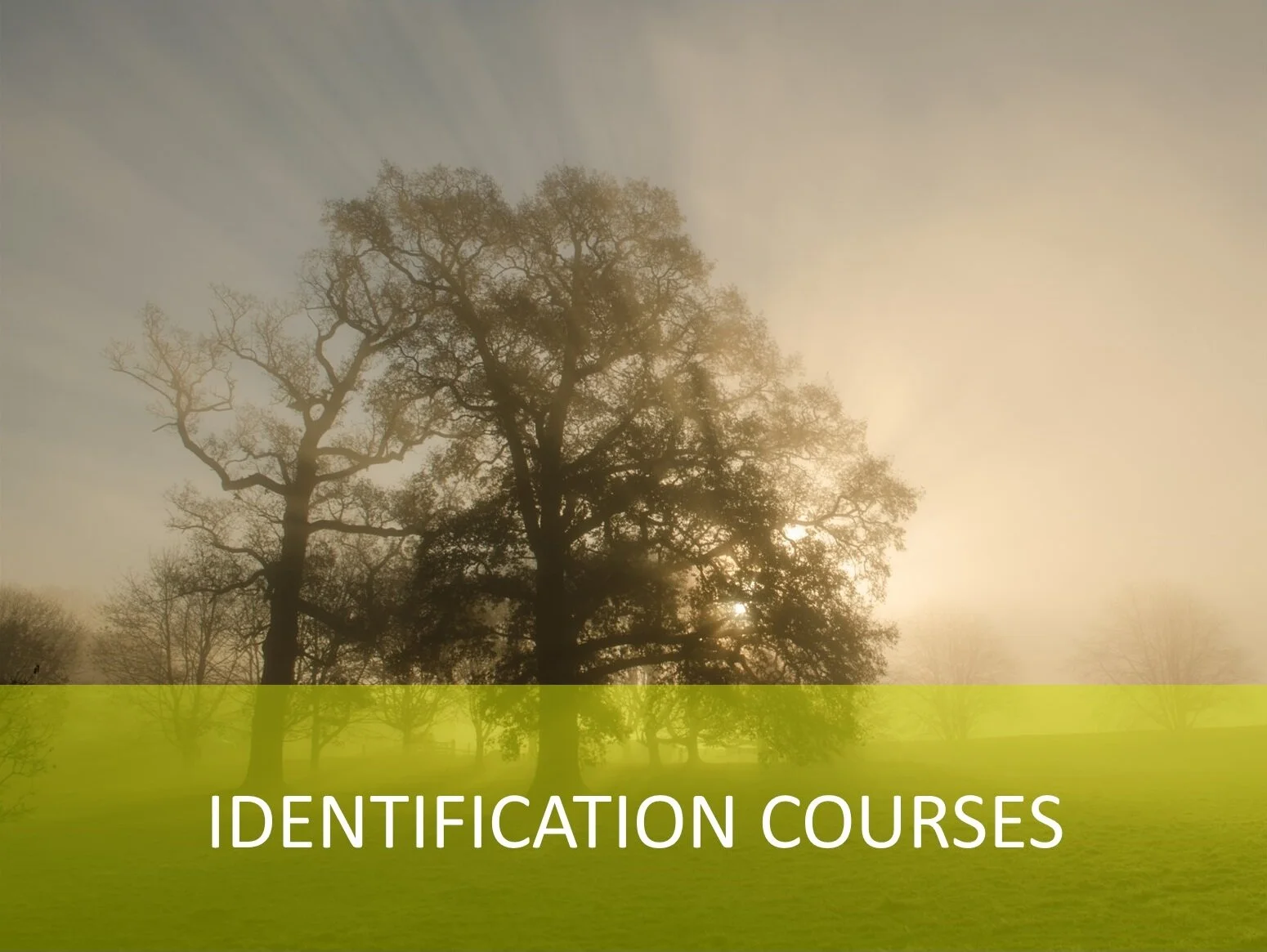
Introduction to Tree Identification: Trees in Winter
£90 including buffet lunch
Why
Trees are often just a beautiful in winter as in summer, as their structure and shape are revealed. It adds a great deal to your appreciation of the winter landscape to know what trees you’re looking at, and there are practical advantages too – but it can be difficult without the leaves. Luckily there are plenty of clues, you just need to know what to look for.
Aim
This day course will introduce you to tree identification in winter, using on a combination of tree form, bark, and twig and bud characters, focusing on common and native deciduous trees growing in the Yorkshire Arboretum. Following a short introduction in the classroom, we will go outside to study them as growing trees before concluding with a comparative exercise inside.
This class is a stand-alone but is one of a three part Introduction to Tree Identification alongside Broad-leaves (30 September) and Conifers (28 October).
Objectives
Discuss the difficulties and opportunities for identifying trees in winter
Learn some obvious characters to look for, using all parts of the tree
Examine a range of specimens in the classroom to become familiar with details to look for
Study trees in the arboretum to see how characters work together to enable identification
Make a key to separate a selection of twigs on their buds and other features
Outcomes
By the end of the workshop, you will be able to:
Recognise a selection of native trees from their winter characteristics, enabling you to appreciate the landscape more
Understand what you should look for in an unknown tree to make a winter identification
Prepare a key to plant features
Know about useful resources to learn more
Useful accessories: Collins Tree Guide (Owen Johnson, 2006), The Field Key to Winter Twigs (John Poland, 2020), Identification of Trees and Shrubs in Winter using Buds and Twigs (Bernd Schulz, 2018), 10× hand lens
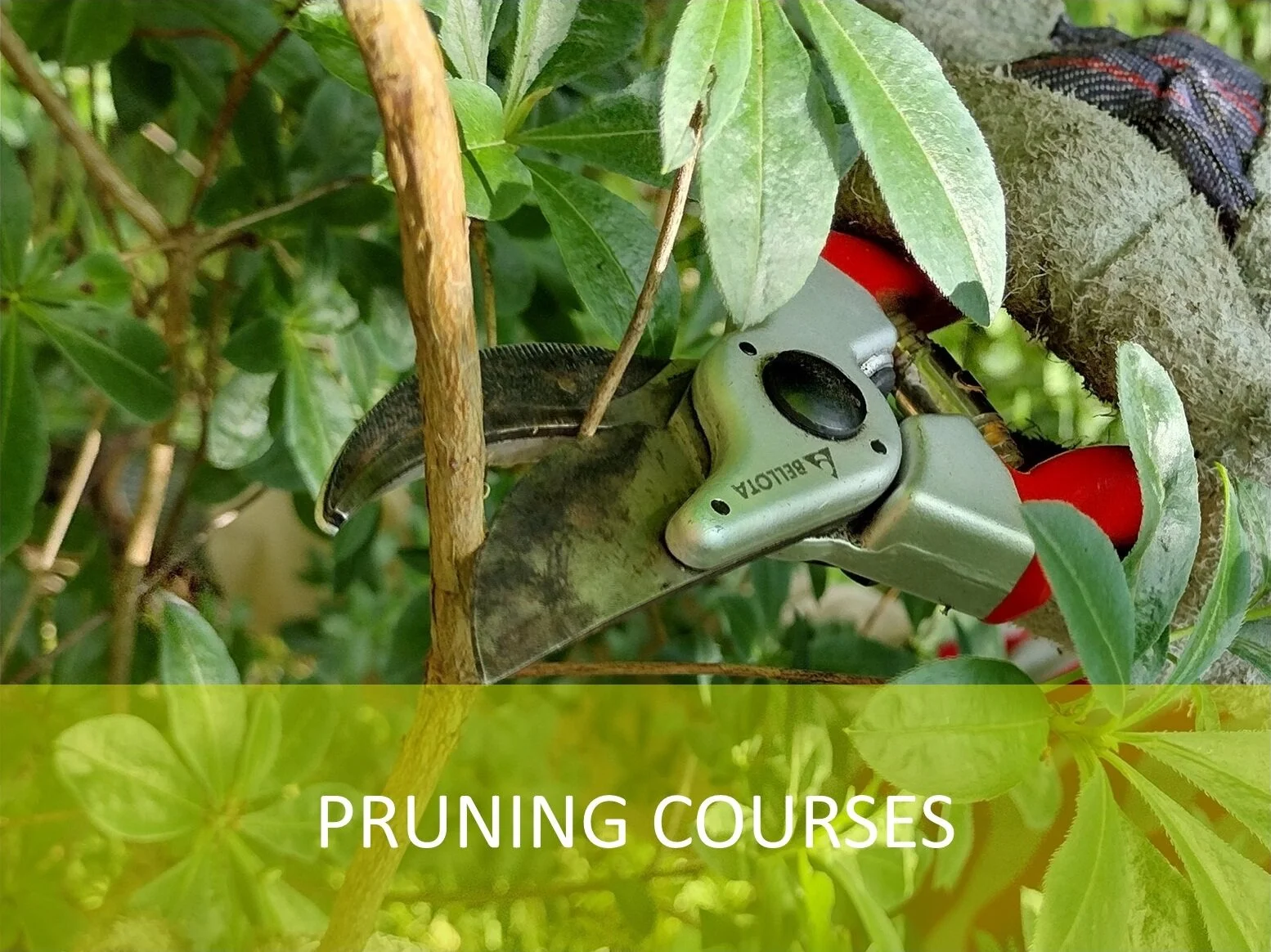
Pruning - An Introduction
£50 including tea and coffee
Why
People often find themselves confronted with a ‘jungle’ of overgrown, unruly shrubs and trees, and wonder what to do about it. Even if they aren’t at that stage, knowing what to prune, when, and how to do it in order to maximise the health and vigour of your plant will reduce the worries about doing this.
Aim
This workshop will provide an introduction to pruning, from when you can safely hack to where more cautious work is needed, giving you the confidence to start managing your woody plants for best results. This will be a hands-on practical demonstration and exercise working with trees and shrubs in the Yorkshire Arboretum.
Aim
Introduction to Tree Health Problems is a half day course for people who want to know more about pests and diseases in trees. Teaching in the classroom and a short tour will be used to familiarise learners with some high profile tree pests and basic categories of problems that affect tree health.
Content
To explain why pruning is needed using example scenarios
Guide through the principles of pruning with live examples in the arboretum
Show how good, bad and a lack of pruning affect plant health and longevity
Talk through the most suitable tools for the task, and use them to prune some practice specimens
Outcomes
By the end of the workshop, you will be able to:
Confidently apply your pruning skills in your own garden
Decide which of your woody plants need pruning and when you should do it
Place your cuts for the best aesthetic and healthiest outcome
Know of some key resources to turn to for help with your pruning decisions
Please dress warmly and bring robust gloves; tools will be provided but feel free to bring personal implements that you’re comfortable working with. Age 16+ only please.

Garden Trees: Best Start
£50 including tea and coffee
Audience
Amateur gardeners, early career private gardeners and horticulturists, and conservation volunteers.
Why
There’s a lot of interest in planting trees at present, for carbon capture and other ecosystem benefits, as well as their own beauty. Planting a tree in your garden or neighbourhood can help a lot, but choosing the right tree, planting and looking after it can be a daunting prospect. This investment can be costly both in time, money and enthusiasm when it goes wrong.
Aim
To ensure that trees thrive Garden Trees: Best Start will guide learners through choosing and planting a healthy tree and its important early maintenance. Learners will leave confident in the knowledge of how to establish a tree for future generations and know about pitfalls that should be avoided.
Objectives
Talk through the importance of sourcing healthy plants.
Share a succinct list of important criteria to choose a high quality retailer.
Use live examples and images to highlight what to look for when purchasing healthy trees.
Explain the best time to plant and show how to handle and care for trees until that time comes.
Demonstrate preparation and planting whilst discussing different situations and supplements.
Use a short tour to show different methods of planting support and protection.
Prioritise the aftercare and maintenance that learners should invest their time in.
Outcomes
By the end of the workshop, you will be able to:
Confidently select good quality healthy trees in a garden centre.
Understand the need for plant passporting and traceability that this provides.
Consider and minimise the factors that might limit your tree’s establishment.
Maximise the likelihood of your tree thriving through appropriate and effective preparation, planting, support and maintenance.

Garden Trees: Best Start
FULLY BOOKED
Audience
Amateur gardeners, early career private gardeners and horticulturists, and conservation volunteers.
Why
There’s a lot of interest in planting trees at present, for carbon capture and other ecosystem benefits, as well as their own beauty. Planting a tree in your garden or neighbourhood can help a lot, but choosing the right tree, planting and looking after it can be a daunting prospect. This investment can be costly both in time, money and enthusiasm when it goes wrong.
Aim
To ensure that trees thrive Garden Trees: Best Start will guide learners through choosing and planting a healthy tree and its important early maintenance. Learners will leave confident in the knowledge of how to establish a tree for future generations and know about pitfalls that should be avoided.
Objectives
Talk through the importance of sourcing healthy plants.
Share a succinct list of important criteria to choose a high quality retailer.
Use live examples and images to highlight what to look for when purchasing healthy trees.
Explain the best time to plant and show how to handle and care for trees until that time comes.
Demonstrate preparation and planting whilst discussing different situations and supplements.
Use a short tour to show different methods of planting support and protection.
Prioritise the aftercare and maintenance that learners should invest their time in.
Outcomes
By the end of the workshop, you will be able to:
Confidently select good quality healthy trees in a garden centre.
Understand the need for plant passporting and traceability that this provides.
Consider and minimise the factors that might limit your tree’s establishment.
Maximise the likelihood of your tree thriving through appropriate and effective preparation, planting, support and maintenance.
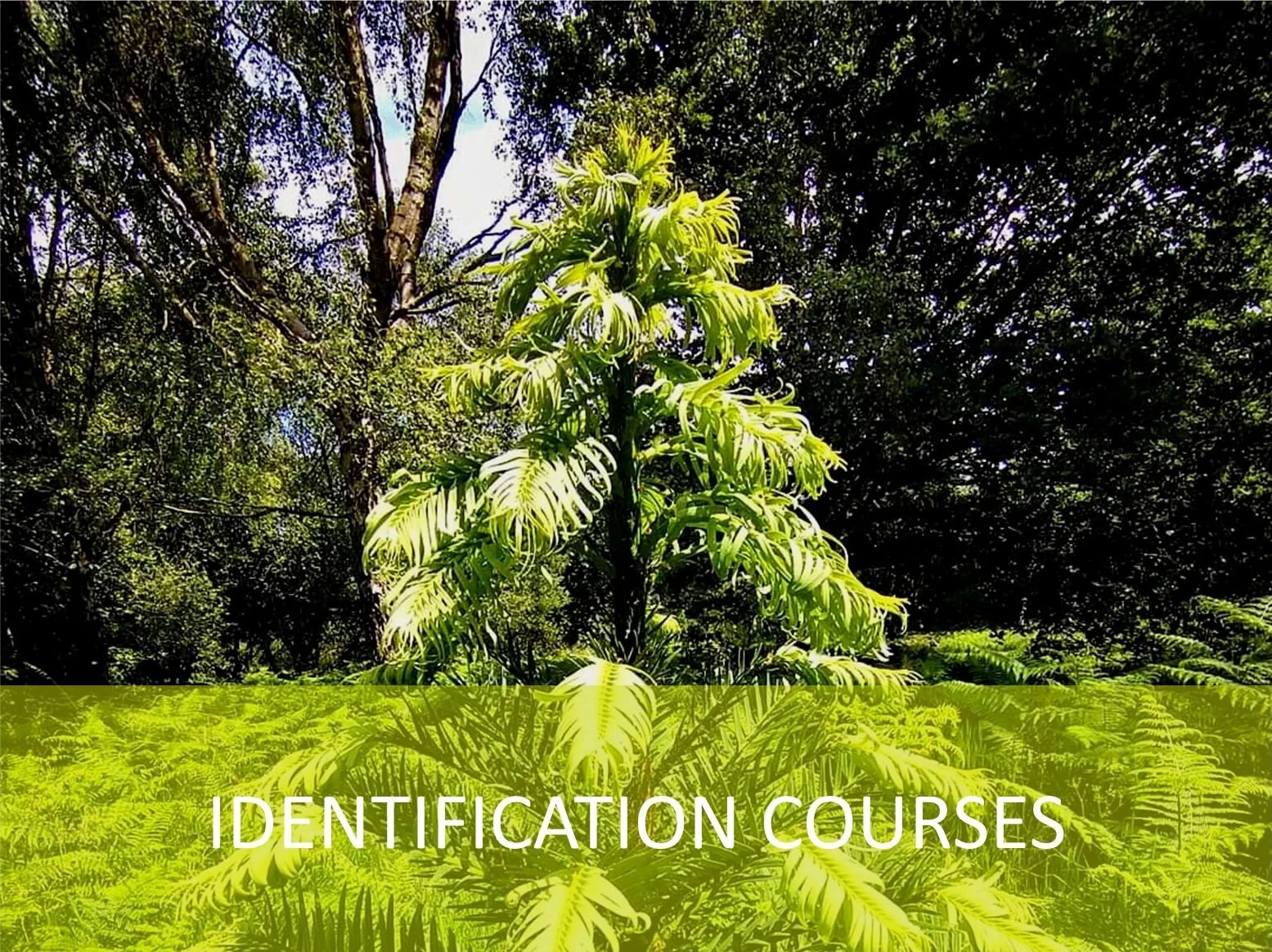
Introduction to Tree Identification: Conifers
£90 including buffet lunch
Why
Conifers are often seen as somewhat alien and even perhaps threatening, but this is often because we don’t know what we’re looking at. As beautiful trees with great ecological and commercial importance they deserve to be understood and appreciated more, and this starts with getting to know them.
Aim
This workshop will introduce you to the main groups of conifers found in British gardens and landscapes, and enable you to be able to identify the major groups using a few easily observed characters. Following a short introduction in the classroom, we will go outside to study them as growing trees in the arboretum, concluding with a summary session indoors.
This class is a stand-alone but also forms part of a three part Introduction to Tree Identification alongside Broad-leaves (30 September) and Trees in Winter (25 November).
Content
Discuss the challenges of conifer identification
Learn about the diversity of coniferous trees around the world, and their importance in the British landscape and economy
Learn some easy characters to look for to distinguish the major groups
Examine a range of specimens in the classroom to become familiar with points to look for
Observe growing trees in the arboretum to see the diversity of tree form in conifers and learn to correlate this with finer details
Finish with a cone quiz
Outcomes
By the end of the workshop, you will be able to:
Confidently recognise a range of widely grown, common conifers
Know more about the diversity of cultivated conifers and their backgrounds
Understand more about the cultural and economic importance of conifers and be able to tell other people about them
Useful accessories: Collins Tree Guide (Owen Johnson, 2006), 10× hand lens
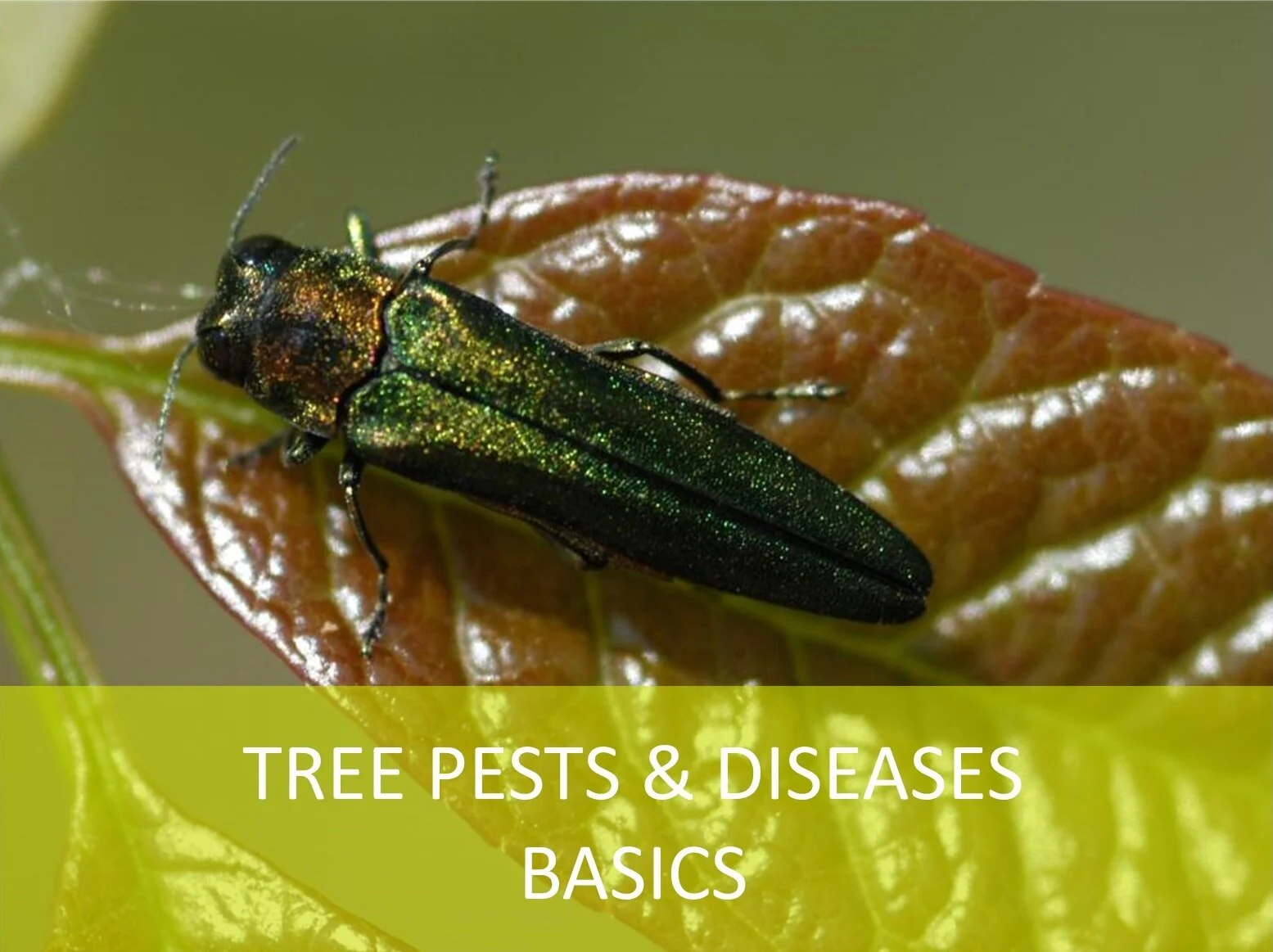
An Introduction to Tree Problems
This course is full
Audience
Amateur gardeners, nature conservation volunteers, entry-level professionals working in landscape or countryside management, forestry, gardening, public sector tree-work and nurseries.
Why
Tree pests and diseases have never been so great a problem as they are now, but the issues are often poorly understood. With a broad range of problems affecting trees it can be difficult to know where to begin as an amateur or entry-level professional. Summarising these tree health problems into basic categories and seeing some of them in person will get you off to the right start.
Aim
Introduction to Tree Health Problems is a half day course for people who want to know more about pests and diseases in trees. Teaching in the classroom and a short tour will be used to familiarise learners with some high profile tree pests and basic categories of problems that affect tree health.
Objectives
Portray the environmental, economic and social impact of tree pests at a national level using introductory examples of priority tree pests.
Provide a brief overview of the UK Plant Health Service.
Combine introductory lecture and a short tree health tour of the arboretum to raise awareness of frequently found and priority pests and disease.
Talk learners through the minimum information to collect to report tree disease.
Highlight the importance of reporting concerns accurately, and where to report them.
Introduce simple biosecurity measures that may limit the spread of tree diseases.
Outcomes
By the end of the workshop, you will be able to:
Justify why it is important to limit the spread of tree pests.
Outline who is responsible for the management of tree pests in the UK.
Begin to categorise and recognise basic types of tree problems.
Give named examples of public priority tree pests and describe the common symptoms that are useful to identify them.
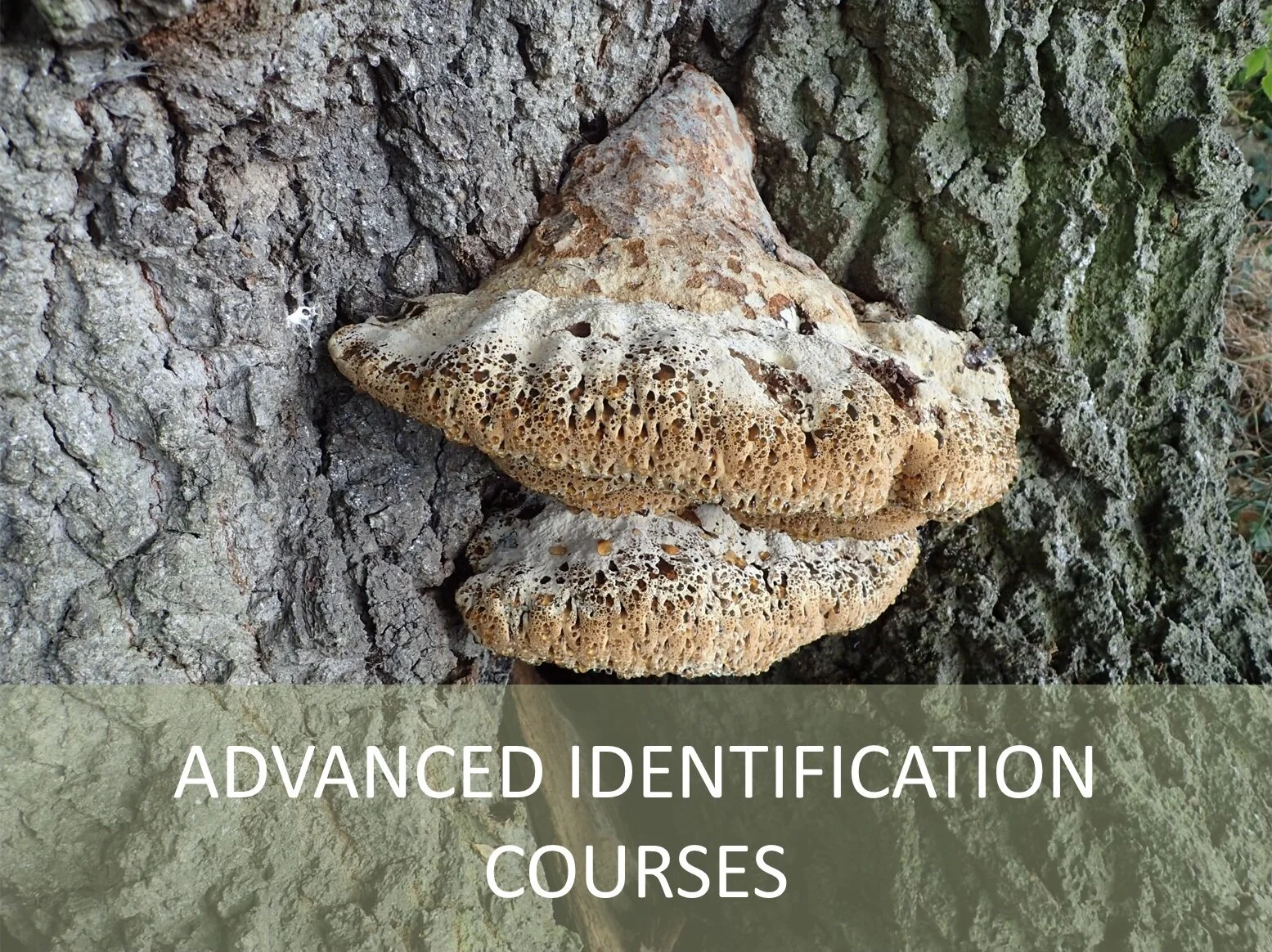
Advanced Trees & Fungi
£45 including tea and coffee
Objectives
Fungal decay in trees can lead to potentially dangerous weaknesses. Understanding the processes of decay and the safety thresholds involved to keep people and property safe is a technical skill demanding lots of experience. Without this knowledge and practice trees tend to be removed over zealously in the name of safety precaution, whereas we should be asking where is it safe to retain a tree and ensure the provision of ecosystem benefits for decades or even centuries to come.
This half day introduction will be supported by the technical expertise and knowledge of Barnes Associates ltd Tree Diagnostics™ Team, and our resident fungi expert Malcolm Greaves. Join us to learn about
Fungal relationships with trees both positive and negative.
The work of a tree surveyor.
How some fungi affect tree’s structure and stability and we can assess this using sonic tomography and tree stability inclinometers.
Tree risk and your duties as a tree owner
This introduction will not prepare or qualify you to assess tree safety, tree assessments should only be carried out by qualified and experienced tree surveyors.

An Introduction to Tree Problems
£50 including tea and coffee
Audience
Amateur gardeners, nature conservation volunteers, entry-level professionals working in landscape or countryside management, forestry, gardening, public sector tree-work and nurseries.
Why
Tree pests and diseases have never been so great a problem as they are now, but the issues are often poorly understood. With a broad range of problems affecting trees it can be difficult to know where to begin as an amateur or entry-level professional. Summarising these tree health problems into basic categories and seeing some of them in person will get you off to the right start.
Aim
Introduction to Tree Health Problems is a half day course for people who want to know more about pests and diseases in trees. Teaching in the classroom and a short tour will be used to familiarise learners with some high profile tree pests and basic categories of problems that affect tree health.
Objectives
Portray the environmental, economic and social impact of tree pests at a national level using introductory examples of priority tree pests.
Provide a brief overview of the UK Plant Health Service.
Combine introductory lecture and a short tree health tour of the arboretum to raise awareness of frequently found and priority pests and disease.
Talk learners through the minimum information to collect to report tree disease.
Highlight the importance of reporting concerns accurately, and where to report them.
Introduce simple biosecurity measures that may limit the spread of tree diseases.
Outcomes
By the end of the workshop, you will be able to:
Justify why it is important to limit the spread of tree pests.
Outline who is responsible for the management of tree pests in the UK.
Begin to categorise and recognise basic types of tree problems.
Give named examples of public priority tree pests and describe the common symptoms that are useful to identify them.

Introduction to Tree Identification: Broad-Leaves
£90 including buffet lunch
Why
Tree identification often seems difficult and challenging, and can be an obstacle to fully appreciating these wonderful plants that are so important to our lives. Being able to identify them opens many doors to understanding the natural world and the wealth of cultural and biological stories each species can tell. Advocacy for trees begins with naming!
Aim
This workshop will introduce you to the process of tree identification, based on summer foliage, using a selection of common or native deciduous trees as our starting point. Following a short introduction in the classroom, we will go outside to study them as growing trees in full leaf and fruit, concluding with an identification challenge in an area of native trees.
This class is a stand-alone but also forms part of a three part Introduction to Tree Identification alongside Conifers (28 October) and Trees in Winter (25 November).
Content
Discuss the principles of identification, and the need for names
Learn about the diversity of British native and frequently planted or naturalised broad-leaved trees
Learn some simple characters to look for, and examine a range of specimens in the classroom to become familiar with important features
Observe growing trees in the arboretum to see how details relate to the whole individual
Undertake an identification challenge in a patch of native trees
Outcomes
By the end of the workshop, you will be able to:
Confidently recognise a range of our common native broad-leaved trees
Find your way around a guidebook to trees
Understand and apply principles of identification to woodland trees
Share why it’s useful to be able to distinguish between trees
Interpret your local treescape and connect to individual trees
Useful accessories: Collins Tree Guide (Owen Johnson, 2006), 10× hand lens
